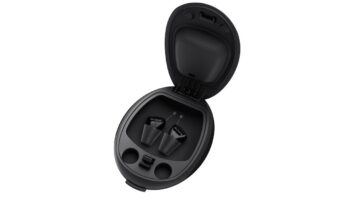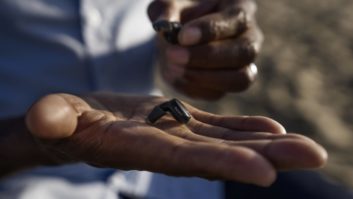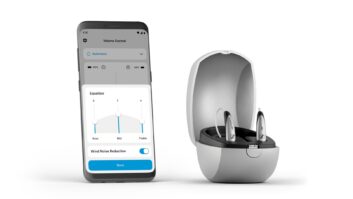
Hearing aids as a consumer product have been on sale at retail over the counter for a little more than a year. But despite their sales potential, few mainstream consumer electronics dealers have taken up OTC hearing aids, perhaps because the products can be perplexing.
To help interested retailers sell OTC hearing aids, here is a primer on the varying devices on the market, as well as a guide to vendors and how-to-sell advice.
What is an OTC Hearing Aid?
Hearing aids have been around for decades. Until a little more than a year ago, however, consumers could buy a hearing aid only via prescription from an audiologist, usually for between $4,000-$8,000. In October 2022, however, federal legislation enabled manufacturers to sell hearing aids over the counter at retail, drastically lowering their price to consumers.
Of course, consumers could buy low-priced devices called “hearing aids” for years. But these hearing boosting devices, usually priced at $300 or less, are not legally “hearing aids,” which are FDA-certified Class II medical devices designed to address and correct a wearer’s specific hearing deficiencies in much the same way that a pair of prescription glasses corrects a person’s specific vision problems.

The FDA has created three major OTC hearing aid categories:
- Self-fitting (FDA codes QUH, QDD): Essentially a DIY hearing aid, a self-fitting OTC hearing aid is paired with a smartphone app that includes a self-administered hearing test similar to the one an audiologist would administer. The user is asked when they can hear a variety of high, middle, or low-frequency tones at varying volumes for each ear, and results are then programmed into the hearing aids. Self-fitting OTC hearing aid models usually are priced between $500 and $1,500.
- Non-self-fitting (QUG): This type of device replaces the app hearing test with a raft of EQ, situational presets, and other app-based sound adjustments that lets a wearer customize the buds via trial-and-error. Non-self-fitting models tend to be slightly less expensive than their self-fitting counterparts.
- Wearable sound amplifying device (QUF): Usually referred to as personal sound amplification devices (PSADs), these hearing aids merely indiscriminately raise the volume of any sound their microphones detect, and usually lack an accompanying smartphone app for control or programming. Most PSADs include “presets” – EQ settings to match varying acoustic situations, such as TV watching, restaurant, meetings, concerts, etc., but include few, if any, customizable settings, and largely lack a smartphone app. For many people with mild hearing loss, these kinds of cheap amplifiers do the trick.
However, most of the cheap “hearing aids” advertised on late-night TV are not FDA-certified and are decidedly NOT medical-grade hearing aids.
OTC Hearing Aid Types
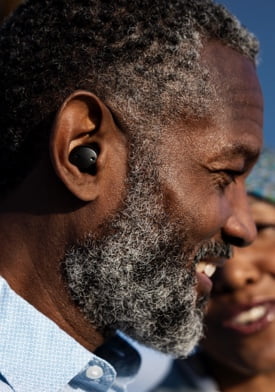
Most traditional hearing aids, both prescriptive and OTC, are so-called RIC (rest-in-canal) models that include a teardrop-shaped microphone/control module that sits behind the ear with a thin connective wire that hangs over the ear terminating in a small speaker that sits at the base of the ear canal. Some OTC RIC hearing models such as the Sennheiser All Day Clear include Bluetooth for music listening and hands-free calling, while other models don’t and focus simply on improving a wearer’s hearing.
Two vendors, Eargo and Zepp, produce small, nearly invisible, hidden-in-canal self-fitting models, which do not include Bluetooth.
However, more familiar consumer electronic hearing aid brands sell a new class of self-fitting hearing aids, a more-or-less standard in-ear Bluetooth earbud equipped with hearing aid technology such as the HP Hearing Pro, the Sony CRE-E10, and the Jabra Enhance Plus.
The differences between RIC and in-ear models, however, are more than ergonomic – they produce far different aural results.
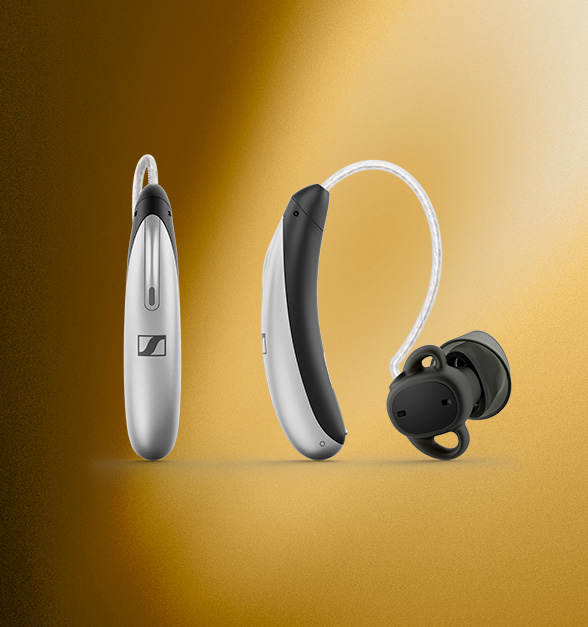
RIC and hidden-in-canal models mix ambient with amplified sound to create a completely natural soundscape, an aural world that sounds just as if the wearer suddenly regained their normal hearing. The compromise for RIC models equipped with Bluetooth is that music from the tiny speaker can be thin and tinny, quickly drowned out by ambient sounds.
In-ear self-fitting Bluetooth hearing aid models, however, are designed to seal the ear canal to achieve the best music reproduction. While ambient sound is effectively amplified, a wearer only hears what the buds’ microphones deliver since no actual ambient sound can enter the sealed canal, which can feel claustrophobic. Since a wearer’s canal is sealed, chewing sounds also can get annoyingly amplified.
This is the basic outline of OTC hearing aid products. In Part II, we’ll discuss who the OTC hearing aid players are, along with the market opportunities and pitfalls.
See also: Google’s New Research Could Give ANC Earphones A Health Upgrade






